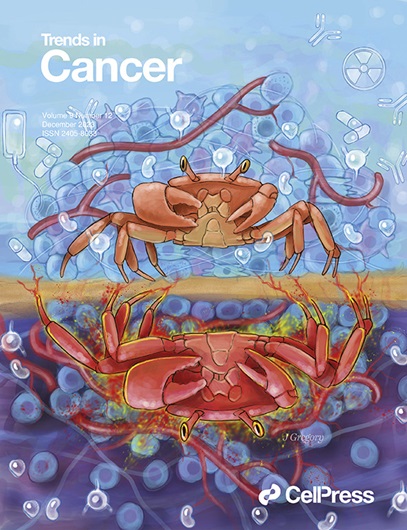运动对抗非小细胞肺癌:新见解。
IF 14.3
1区 医学
Q1 ONCOLOGY
引用次数: 0
摘要
运动潜在的“抗癌”效应背后的机制仍然知之甚少。Luo等人最近发现了一种运动诱导的、肌肉来源的细胞外囊泡(EV)相关的miR, miR-29a-3p,在运动对抗非小细胞肺癌(NSCLC)的潜在益处中起着关键作用,包括细胞外基质(ECM)抑制和抗肿瘤免疫反应的改善。本文章由计算机程序翻译,如有差异,请以英文原文为准。
Exercise against nonsmall-cell lung carcinoma: novel insights.
The mechanisms underlying the potential 'anticancer' effects of exercise remain poorly understood. Luo et al. recently identified an exercise-induced, muscle-derived extracellular vesicle (EV)-associated miR, miR-29a-3p, as a key player in the potential benefits of exercise against nonsmall-cell lung carcinoma (NSCLC), including extracellular matrix (ECM) inhibition and improved antitumoral immune responses.
求助全文
通过发布文献求助,成功后即可免费获取论文全文。
去求助
来源期刊

Trends in cancer
Medicine-Oncology
CiteScore
28.50
自引率
0.50%
发文量
138
期刊介绍:
Trends in Cancer, a part of the Trends review journals, delivers concise and engaging expert commentary on key research topics and cutting-edge advances in cancer discovery and medicine.
Trends in Cancer serves as a unique platform for multidisciplinary information, fostering discussion and education for scientists, clinicians, policy makers, and patients & advocates.Covering various aspects, it presents opportunities, challenges, and impacts of basic, translational, and clinical findings, industry R&D, technology, innovation, ethics, and cancer policy and funding in an authoritative yet reader-friendly format.
 求助内容:
求助内容: 应助结果提醒方式:
应助结果提醒方式:


